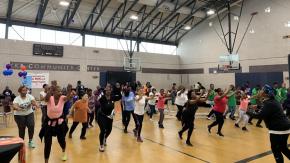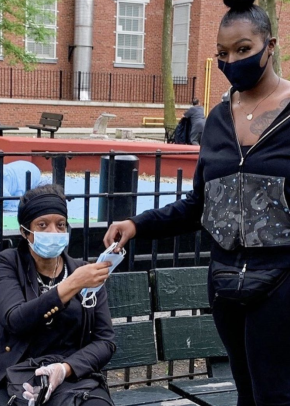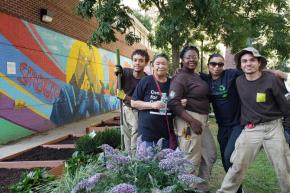Building a model for the future by reimagining public safety at New York City housing sites across the five boroughs.

Van Dyke health and wellness day
Invest in Residents
Neighborhood Safety Initiatives hires, trains, and supports community organizers; recruits and organizes resident leadership teams; designs and implements social programs; manages community action plans; and implements data collection and evaluations. Social programs include youth mentorship, coding courses, music mentorship, adult entrepreneurship, intergenerational green space stewardship, healing and justice events, public education campaigns, summer time basketball series, economic mobility events and more. Neighborhood Safety Initiatives also responds to residents’ immediate needs. The program coordinates collaboration across city agencies and other non-profit partners to answer food needs, connect residents to resources, and host conflict resolution events.
We desperately need a place specifically for the youth. Because they hang out and there is not a place to go and I think they feel like nobody cares about us. So then they start getting into things that they should not get into. A youth center means we’re preparing the youth for whatever they need to be the future leaders. So, we, resident stakeholders said, okay, we’re going to focus on them. So we asked them.
— Jolyn, Saint Nicholas resident
Transform Public Spaces
Neighborhood Safety Initiatives works with residents to re-envision public spaces to make them more welcoming and promote people’s wellbeing. In the last two years, as part of the action plans, the program has designed and implemented a series of community gardens and recreational public spaces, wayfinding projects, murals, creative lighting installations, and a pop-up outdoor program with movable kiosks.
Influence Policy
One of the program’s overarching goals is to bridge the gap between policymakers and community members. Neighborhood Safety Initiatives uses resident teams to identify policy issues and discuss them with representatives of city agencies and other stakeholders. The teams then use a participatory decision-making process to bring even more residents to the table. Additionally, the program co-hosts a yearly policy summit, an interactive day of learning and idea sharing about how to create safety.
Emergency Response

Deliveries of PPE during first months of COVID emergency response
Throughout the COVID-19 pandemic, Neighborhood Safety Initiatives has invested in resident well being and local leadership networks by conducting a needs assessment, helping residents deliver essential goods to their neighbors, and offering informational seminars.
Locations
Neighborhood Safety Initiatives supports the implementation of NeighborhoodStat, a team of local residents, community stakeholders, and city agency representatives who work together to identify and solve public safety issues within the following public housing communities: Brownsville Houses, Van Dyke Houses, Butler Houses, Castle Hill Houses, Boulevard Houses, Linden Houses, Polo Grounds Towers, Morris Houses, Queensbridge Houses, Bushwick Houses, Red Hook Houses, St. Nicholas Houses, Far Rockaway Houses, Jefferson Houses, Johnson Houses, Wagner Houses, Gowanus Houses, Wyckoff Houses, Tilden Houses, Langston Hughes Houses, Patterson Houses, Ingersoll Houses, Whitman Houses, Tompkins Houses, Marcy Houses, Sumner Houses, Stapleton Houses, West Brighton Houses, Mott Haven Houses, Mitchel Houses.
Impact

Transforming spaces activates community engagement
Neighborhood Safety Initiatives worked with each resident team to complete their action plans and access $10,000-$57,000—a total of $550,000 citywide for resident-driven projects to improve public safety. The program has reached over 60,000 residents of the New York City Housing Authority.
Background
Launched in 2014 by MOCJ, Mayor’s Action Plan (MAP) is a comprehensive neighborhood-based strategy to increase safety through coordinated crime reduction efforts at specific NYCHA developments across New York City. The MAP approach enlists residents, City agencies and community-based partners to help move beyond enforcement and address the factors underlying safety—providing opportunities for work and play, health and well-being, and youth development; promoting activated, well-maintained spaces through community and human-centered design; and improving trust between neighbors with a responsive and just government. MAP includes a network of Agency partnerships and investments including Summer Youth Employment Program placements with DYCD, Next Steps partners through DOP, community-based engagement staff from DFTA and HRA, and a range of other site-specific support resources.

